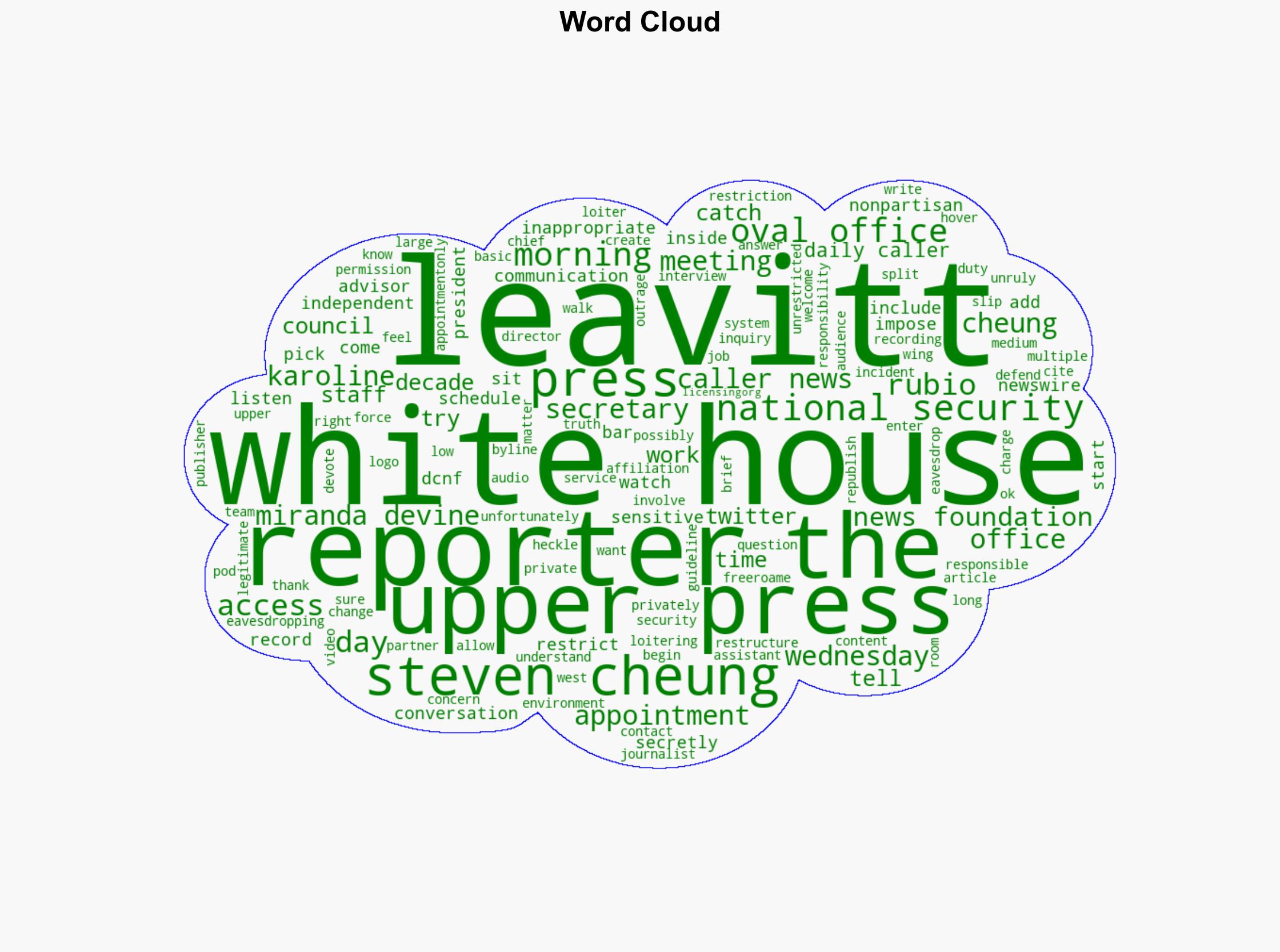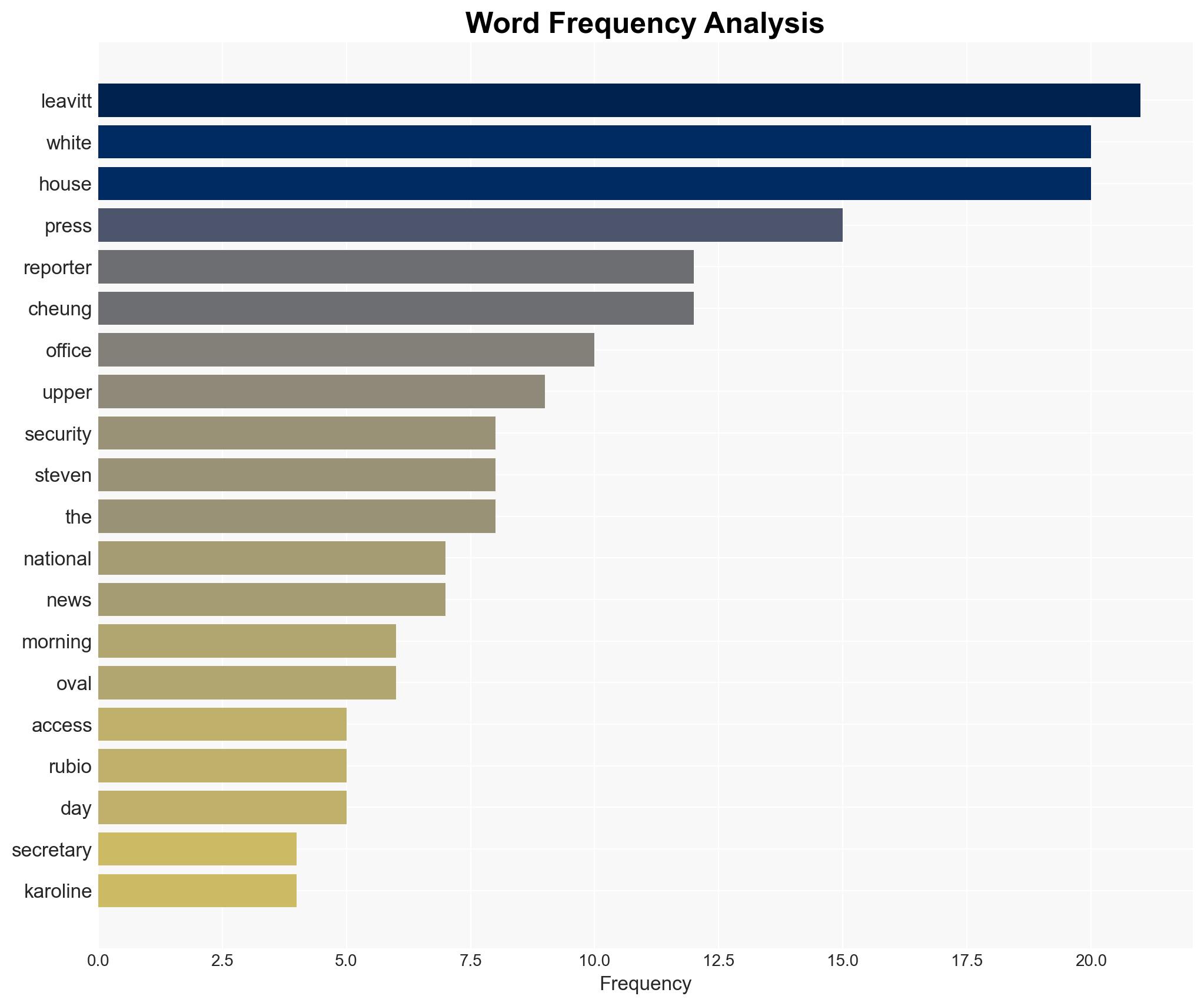Karoline Leavitt Says Reporters Caught Spying On White House Staff – The Daily Caller
Published on: 2025-11-20
AI-powered OSINT brief from verified open sources. Automated NLP signal extraction with human verification. See our Methodology and Why WorldWideWatchers.
Intelligence Report:
1. BLUF (Bottom Line Up Front)
There is a moderate confidence that the White House’s decision to restrict press access is primarily a security measure rather than an attempt to suppress media freedom. The most supported hypothesis is that the restrictions are a response to specific security breaches. Recommended action includes monitoring the situation for potential impacts on media relations and ensuring transparent communication to mitigate perceptions of media suppression.
2. Competing Hypotheses
Hypothesis 1: The White House imposed restrictions on press access due to genuine security concerns following specific incidents of unauthorized recording and eavesdropping by reporters.
Hypothesis 2: The restrictions are a strategic move by the White House to control media narratives and limit press scrutiny under the guise of security concerns.
Hypothesis 1 is more likely given the reported incidents of security breaches and the involvement of the National Security Council in restructuring access. However, the lack of detailed evidence and potential biases in reporting necessitate cautious interpretation.
3. Key Assumptions and Red Flags
Assumptions: It is assumed that the reported incidents of unauthorized recordings are accurate and not exaggerated. It is also assumed that the White House has legitimate security concerns.
Red Flags: The source of the information, The Daily Caller, may have inherent biases. The lack of independent verification of the incidents is a concern. The timing of the restrictions could be perceived as politically motivated.
4. Implications and Strategic Risks
The primary risk is the potential erosion of trust between the White House and the press, which could lead to increased tensions and adversarial relationships. This could escalate into broader informational conflicts, affecting public perception and media credibility. There is also a risk of political fallout if the restrictions are perceived as an attack on press freedom.
5. Recommendations and Outlook
- Ensure transparent communication from the White House regarding the reasons for the restrictions to maintain trust with the press.
- Monitor media reactions and public sentiment to adjust strategies as necessary.
- Best-case scenario: The restrictions are accepted as necessary security measures, and relations with the press remain stable.
- Worst-case scenario: The restrictions lead to significant backlash, damaging the White House’s credibility and increasing political polarization.
- Most-likely scenario: Initial tensions arise, but with effective communication, the situation stabilizes without major long-term impacts.
6. Key Individuals and Entities
Karoline Leavitt, Steven Cheung, Miranda Devine, Rubio (likely referring to a security official), National Security Council.
7. Thematic Tags
Structured Analytic Techniques Applied
- Cognitive Bias Stress Test: Expose and correct potential biases in assessments through red-teaming and structured challenge.
- Bayesian Scenario Modeling: Use probabilistic forecasting for conflict trajectories or escalation likelihood.
- Network Influence Mapping: Map relationships between state and non-state actors for impact estimation.
Explore more:
National Security Threats Briefs ·
Daily Summary ·
Support us





